- Effective facelift has improved the car's styling
- Strong ownership credentials
- Infinitely better than the ASX
- No rear air vents in a family car?
- Thirsty and not that quick
- Lower models are better value
The further we head into 2021, it’s more and more obvious that SUVs are absolutely killing the sales charts. The more SUVs a company has to sell, the more sales it will inevitably earn. Mitsubishi is a company that has an almost all-SUV lineup – just the Mirage remains in the passenger car segment – and while some have massive gaps between them in size, others are so similar that you wonder why they exist. Enter the 2021 Mitsubishi Eclipse Cross Exceed.
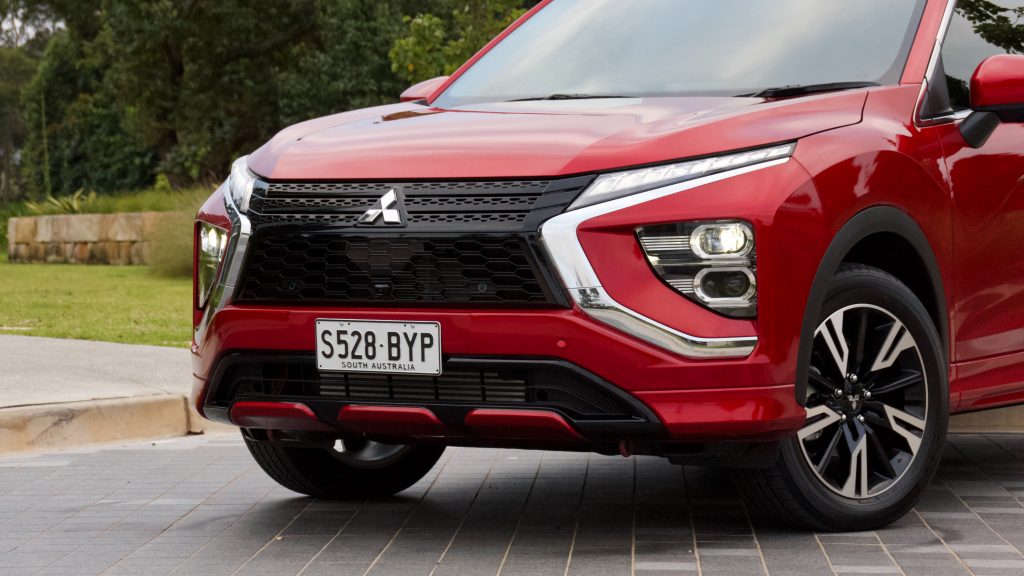
Positioned – no, wedged – in between the huge-selling ASX and the larger Outlander, the Eclipse Cross was launched in 2017 as the more premium and slightly larger alternative to the ASX. It introduced a drastic new look for Mitsubishi, as well as a higher quality interior and new tech, such as a touchpad infotainment system and a 1.5-litre turbocharged engine in the hopes that some buyers would see the extra value in it over the ASX – in 2020 at least, the ASX sold three times as many as the Eclipse Cross, though almost 5,000 of the latter were sold.
Now, four years on, the Eclipse Cross has received a pretty big mid-life update that’s made it more feature packed, more refined, 140mm longer and – crucially for a lot of buyers – more attractive to look at as well. Should it be on your small-to-mid-size SUV shopping list? Let’s find out.
Price and Equipment: 7/10
Mitsubishi is a brand that sells its cars predominantly on their value equations, and the Eclipse Cross Exceed doesn’t disappoint. While it’s far from cheap, it is quite well equipped.
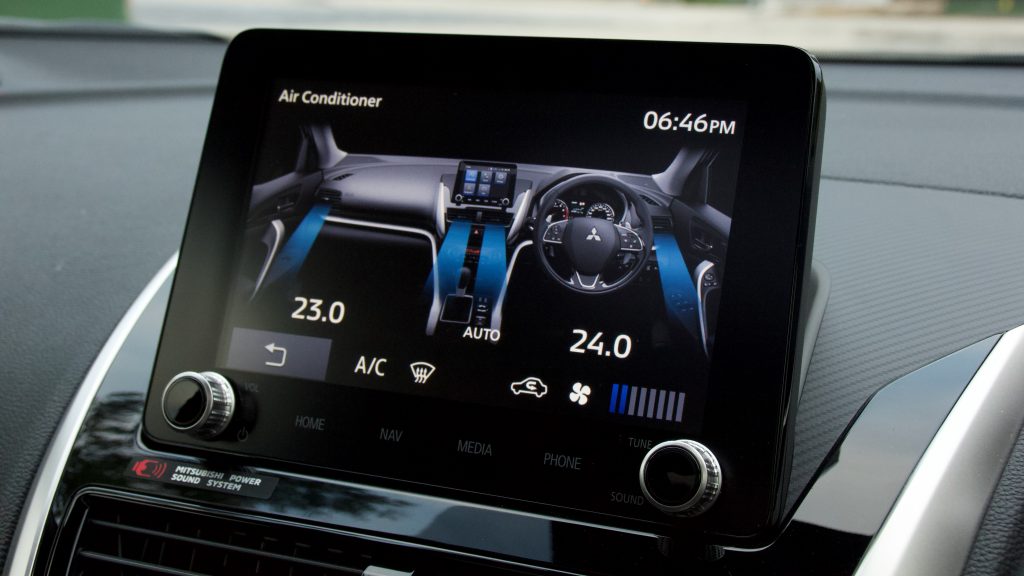
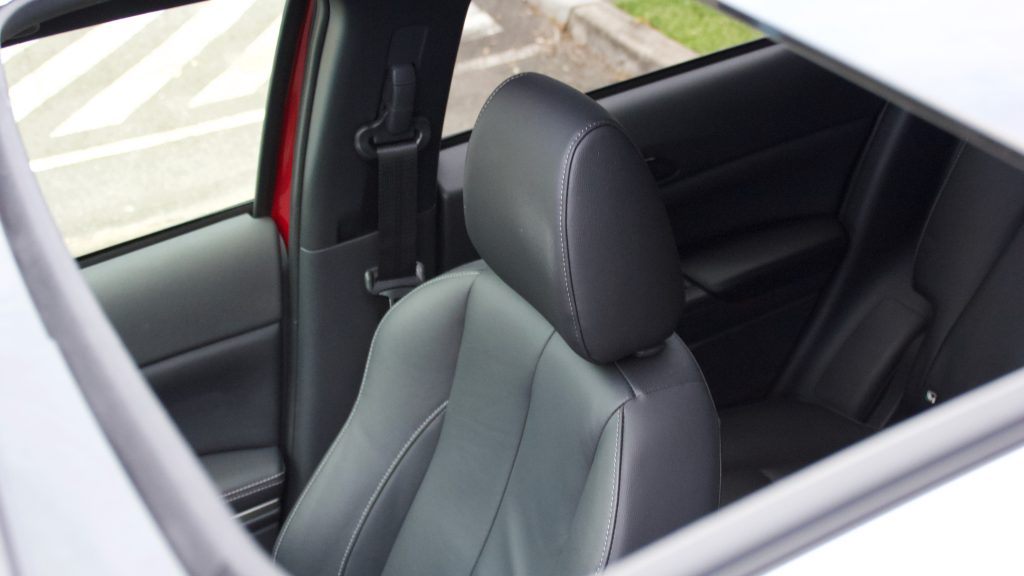
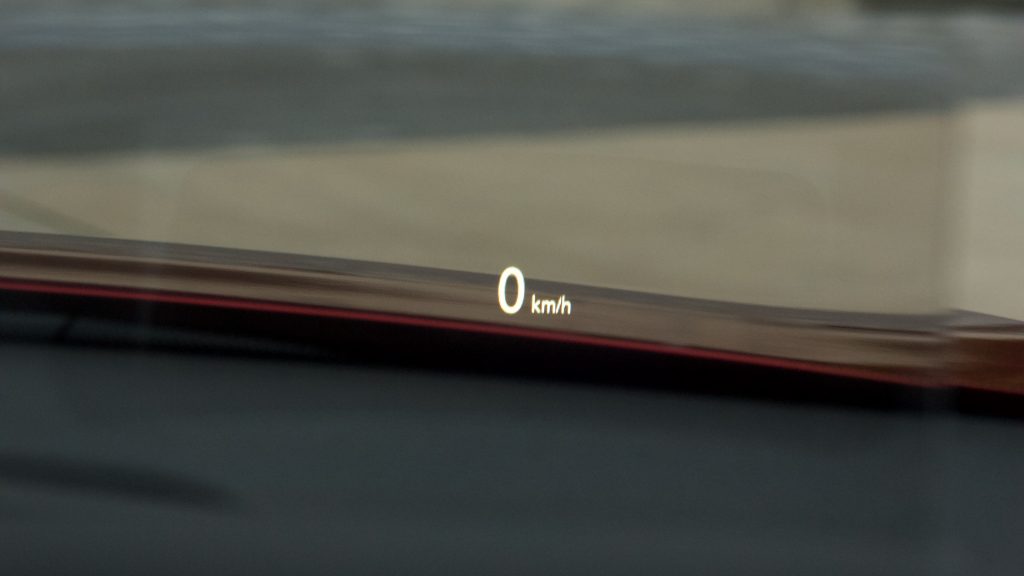
The Eclipse Cross we tested is the $43,990 drive away Exceed, which is the top of the tree in Australia for now. Because of that, it offers almost everything that the small-to-mid-size SUV buyer could want. LED lighting with LED front fog lights, auto lights and wipers, 18-inch wheels, leather upholstery with electric front seats, heated front and rear seats, a heated steering wheel, dual-zone climate control, a dual-panel sunroof, an eight-speaker sound system, an 8.0-inch touchscreen with inbuilt nav, Apple CarPlay and Android Auto, digital radio, multiple USB ports, an eight-speaker sound system, a heads-up display, keyless entry and start, auto-folding mirrors and a leather steering wheel and gear knob are all standard.
Safety kit is pretty extensive too, with six airbags, auto emergency braking (AEB) with pedestrian detection, adaptive cruise control with stop and go functionality, lane departure warning, auto high beam, a 360-degree parking camera, blind-spot monitoring with rear cross-traffic alert, front and rear parking sensors and driver attention monitoring. Rear AEB, traffic sign recognition and a full lane keep assist system are the only systems missing.
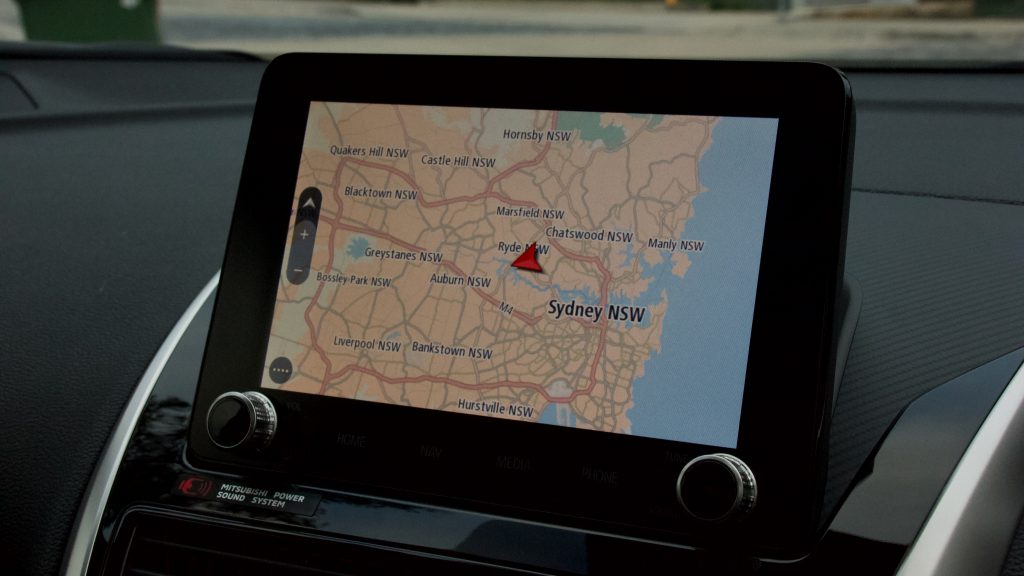
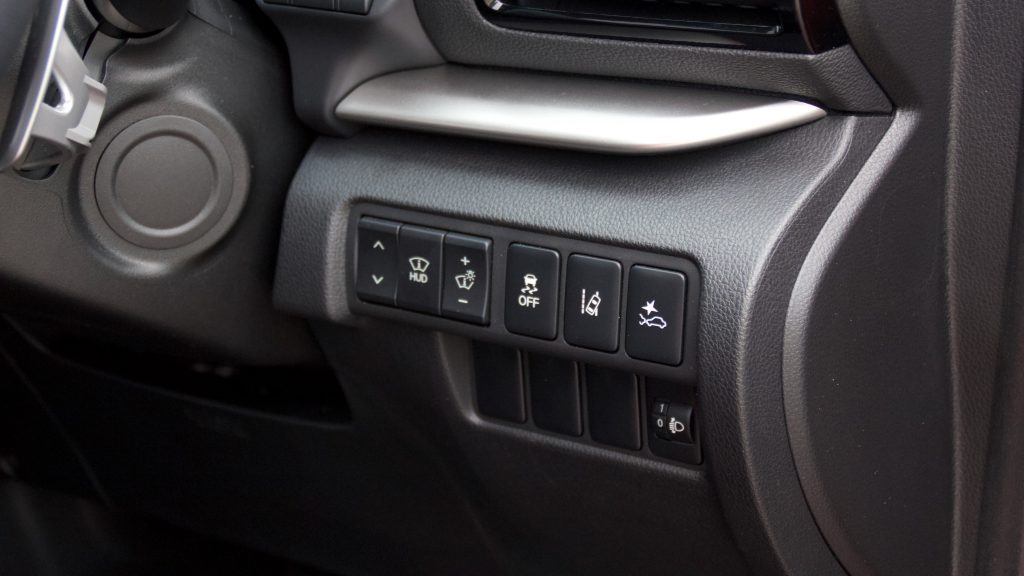

The Eclipse Cross range starts from $30,490 drive away, which places it at the value end of the segment with not many competitors. Yet by the time you get to this Exceed AWD, there’s a plethora of competition – the Volkswagen T-Roc 140TSI, the Skoda Karoq Sportline 140TSI, the Kia Seltos GT-Line and the Mazda CX-30 G25 Touring.
Then there’s that cars such as the $43,990 drive away Mazda CX-5 Touring AWD, which isn’t quite as well equipped as the Eclipse Cross Exceed, but it’s more practical, better to drive and higher quality on the inside.
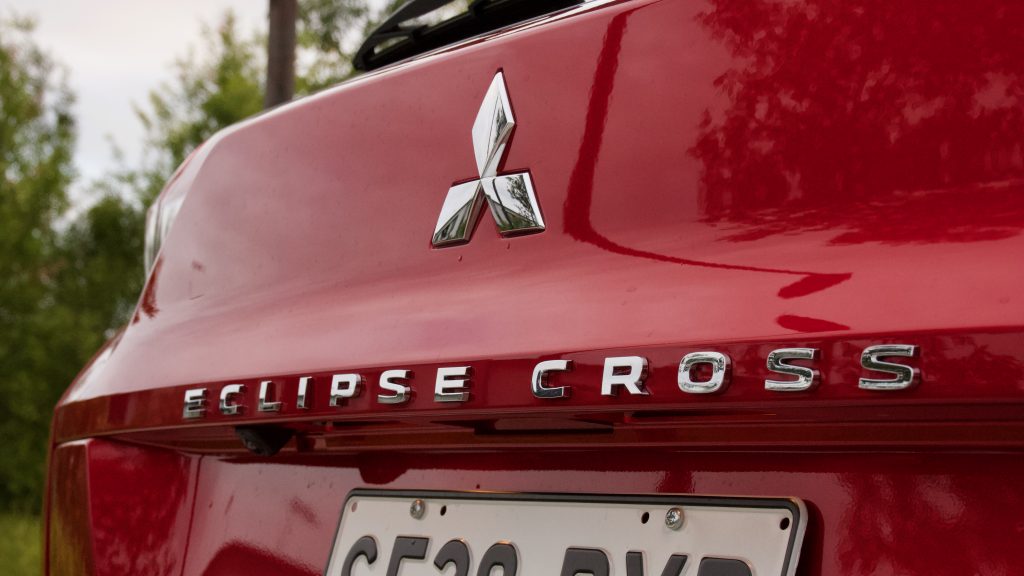
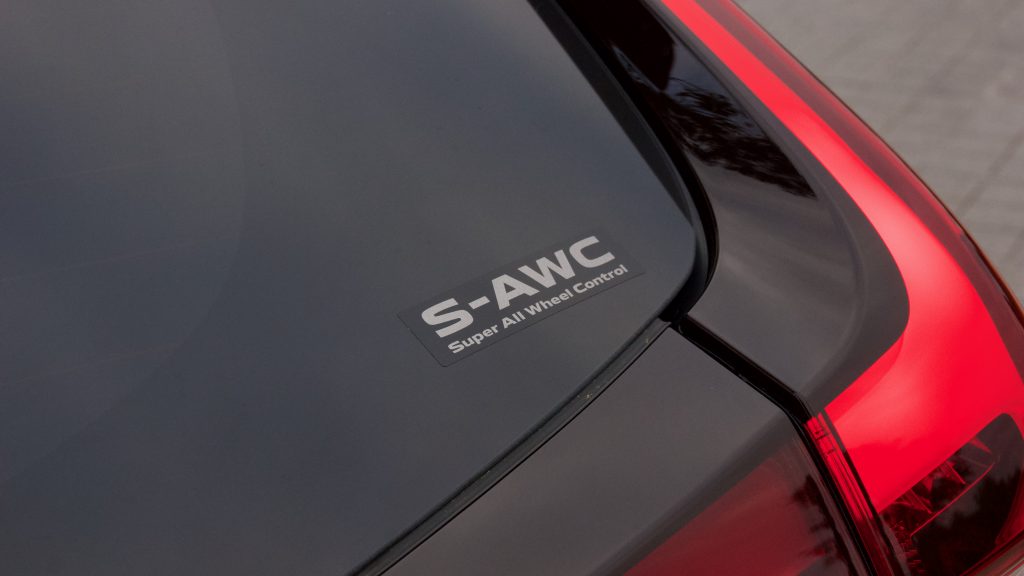
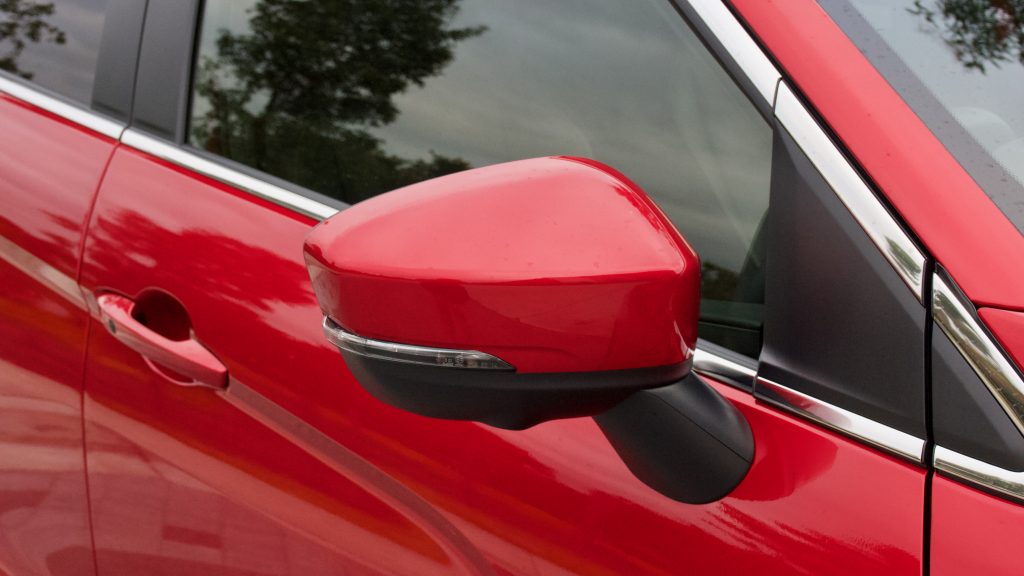
If we were buying an Eclipse Cross, we’d stick to the $36,490 drive away Aspire that sits directly underneath the Exceed. It still offers AEB, auto high beam, auto lights and wipers, keyless entry and start, lane departure warning, blind-spot monitoring with rear cross-traffic alert, faux leather/suede seats with heated front seats, an eight-speaker sound system and even a 360-degree parking camera – the Exceed only adds LED headlights, integrated navigation, a head-up display and a few other items. Not quite as healthy as the Exceed, but the Aspire is much better value for money.
Performance and Fuel Economy: 7/10
While the ASX and Outlander feature naturally aspirated donks, the Eclipse Cross offers a smaller 1.5-litre turbocharged four-cylinder petrol engine. While its 110kW peak power output is nothing huge, its 250Nm peak torque output is pretty good for the segment. It’s no supercar though, with a 9.8-second 0-100km/h sprint time thanks to its porky 1,545kg kerb weight.
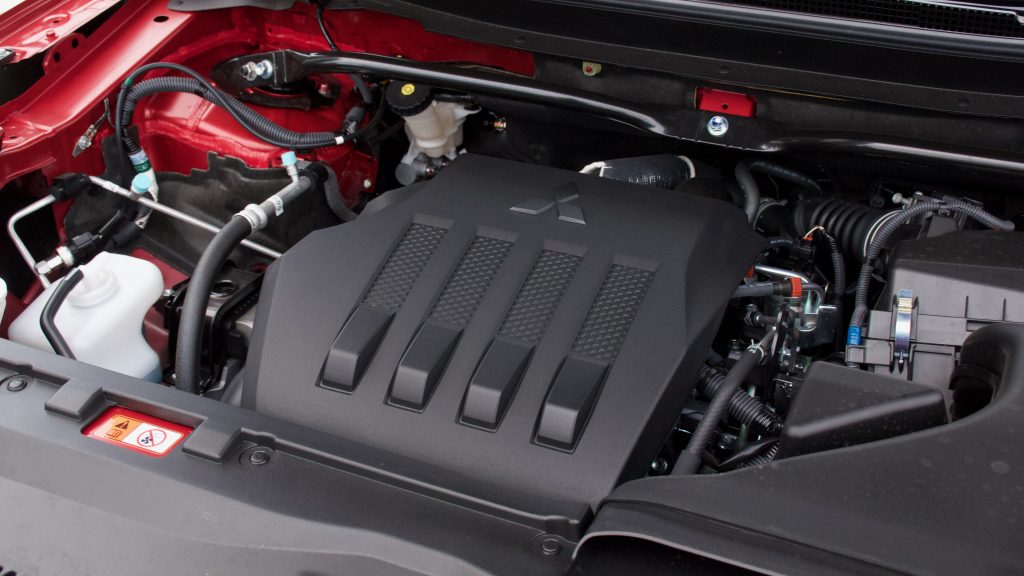
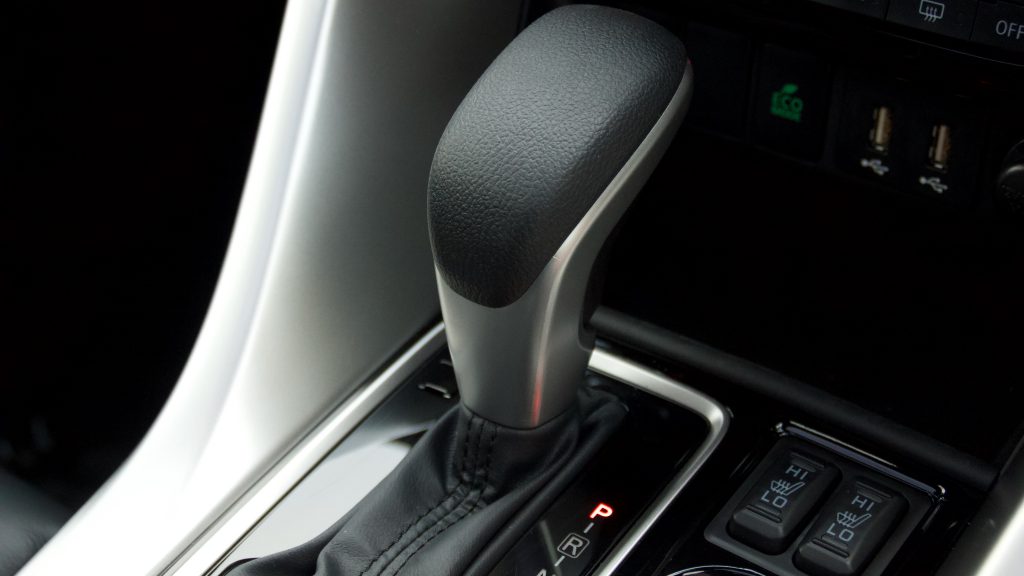
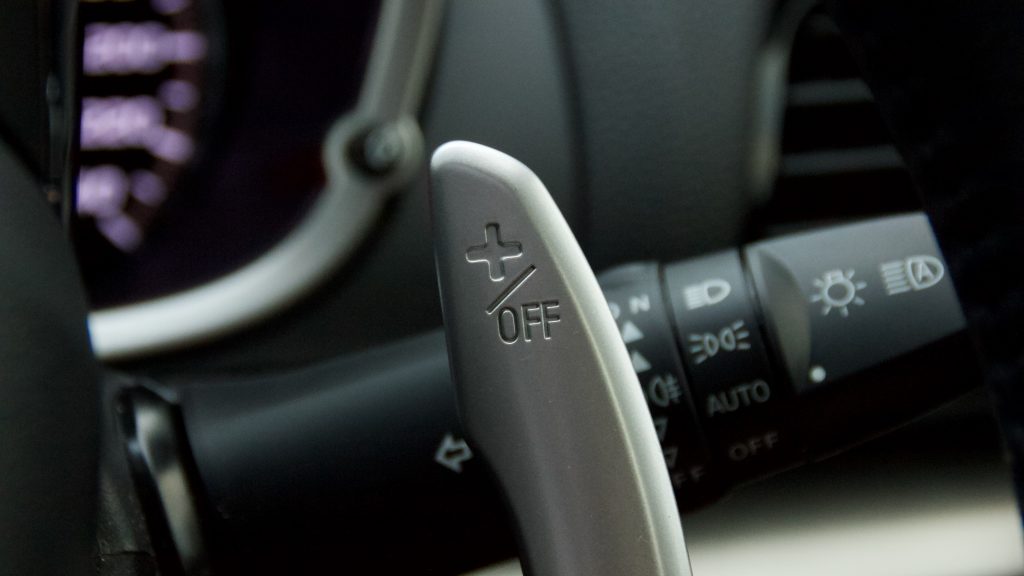
Like its siblings, it’s equipped with a CVT automatic transmission as standard and because the Eclipse Cross has torque, it’s a much more pleasing experience than the ASX or Outlander. This is because the engine doesn’t have to rev to get the best out of it, and this largely eradicates the elastic feel to the transmission in everyday driving – for those who want it, there are eight simulated manual speeds as well. So it’s a more refined engine and its performance is alright as well – what’s not so good about it?
Well it’s certainly not the most efficient engine. Mitsubishi claims 7.7L/100km on a combined cycle, and we got just under 10L/100km in combined driving – but keep it purely urban and you’ll be looking at 12+. Even on a highway run to Canberra from Sydney and back, we struggled to get it under 7.5L/100km, which is around 2L/100km more than a T-Roc or Karoq 140TSI AWD will manage. Luckily the Eclipse Cross has a big 60-litre fuel tank for a good range and will run on cheaper 91RON fuel to help offset costs.
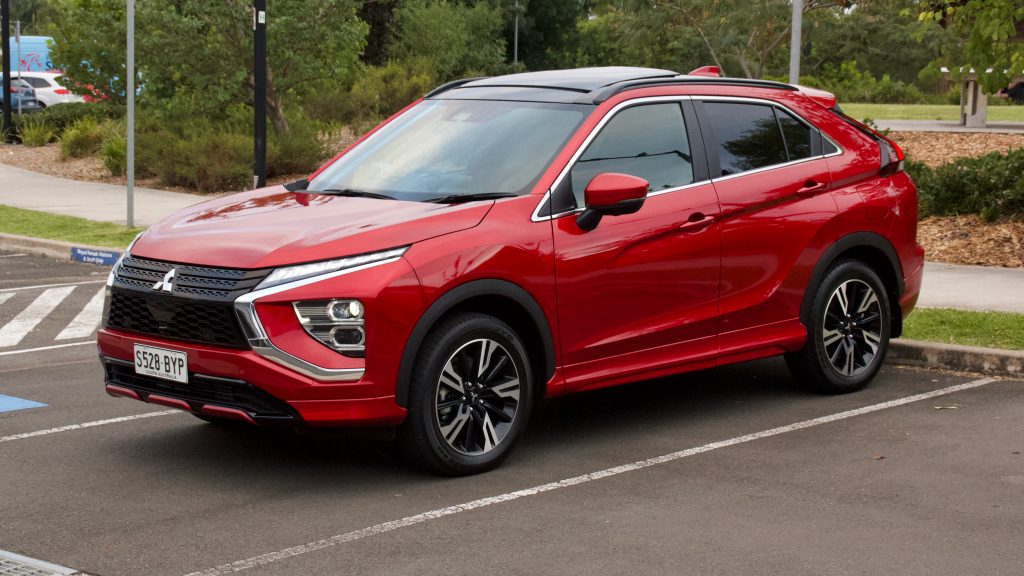
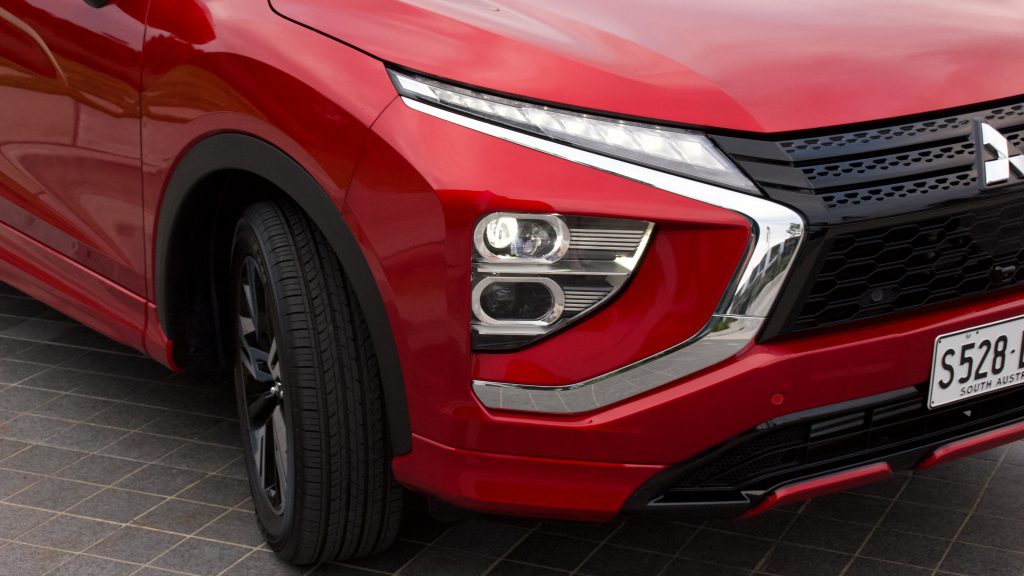
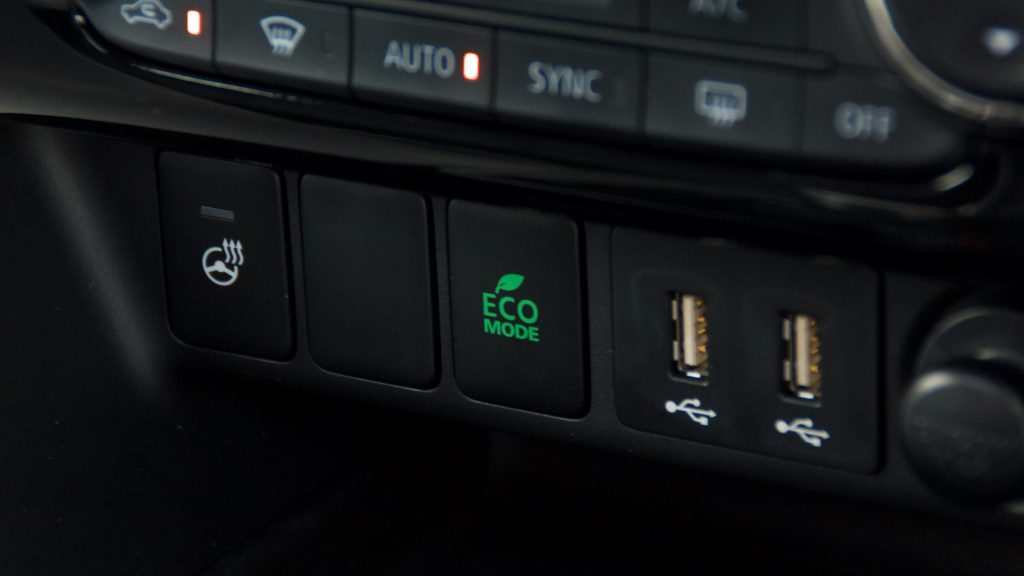
We’d also love to see Mitsubishi offer a more exciting Eclipse Cross. The 1.5T is more than adequate for most buyers, but the company that has offered almost endless performance cars should have the guts to make the Eclipse Cross have more of a pulse – a 200kW Eclipse Cross Evolution would be quite a tasty offering.
Ride and Handling: 7/10
The coupe-like styling of the 2021 Mitsubishi Eclipse Cross Exceed has always echoed a sportier driving experience, and it’s true – it’s certainly more fun to drive than the ASX (though that’s not entirely difficult). Its suspension has definitely been improved compared with the pre-facelifted model but we think it needs another layer of finesse to better deal with the typically rubbish Australian roads. But for the most part, it does its job well.
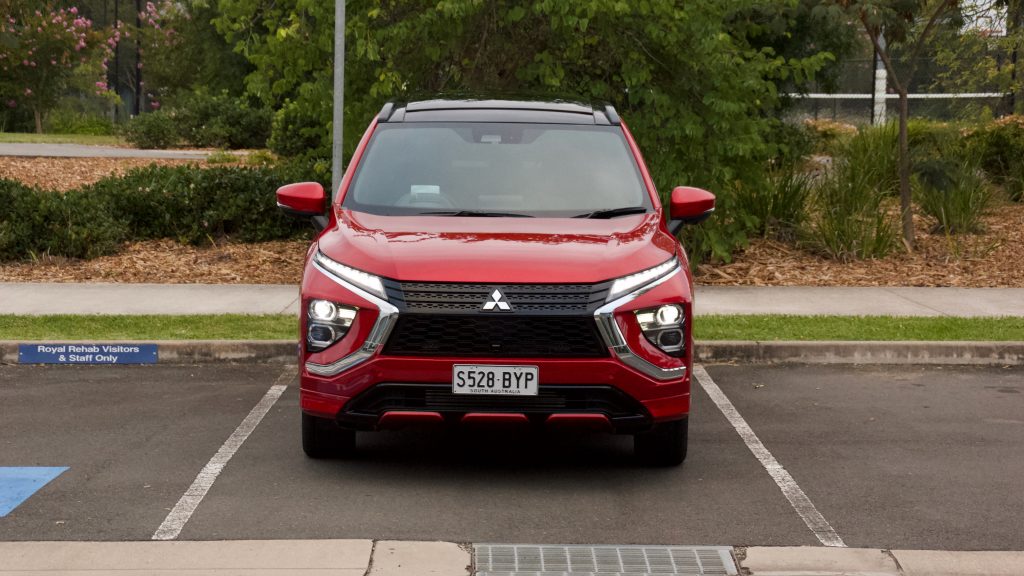
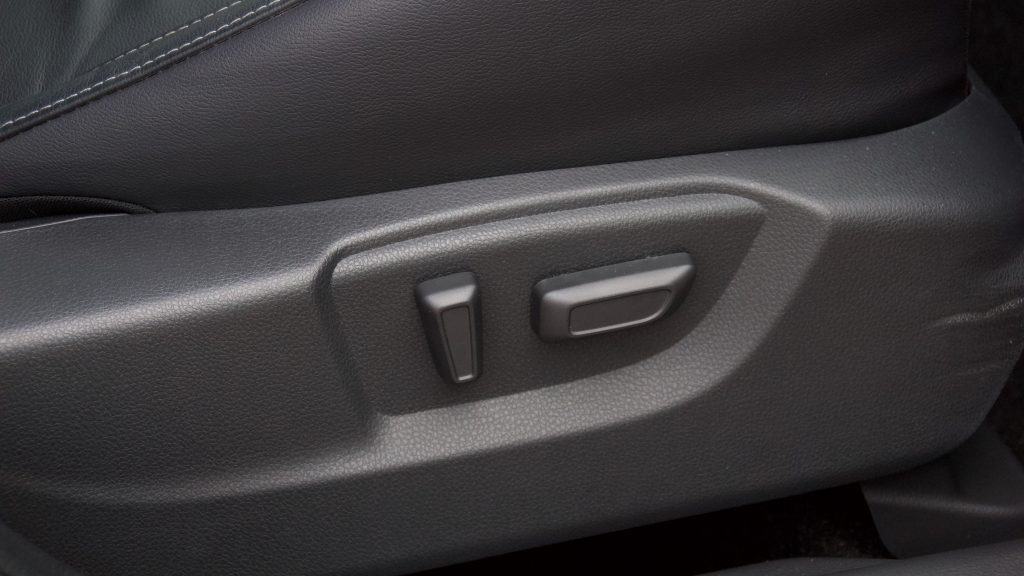
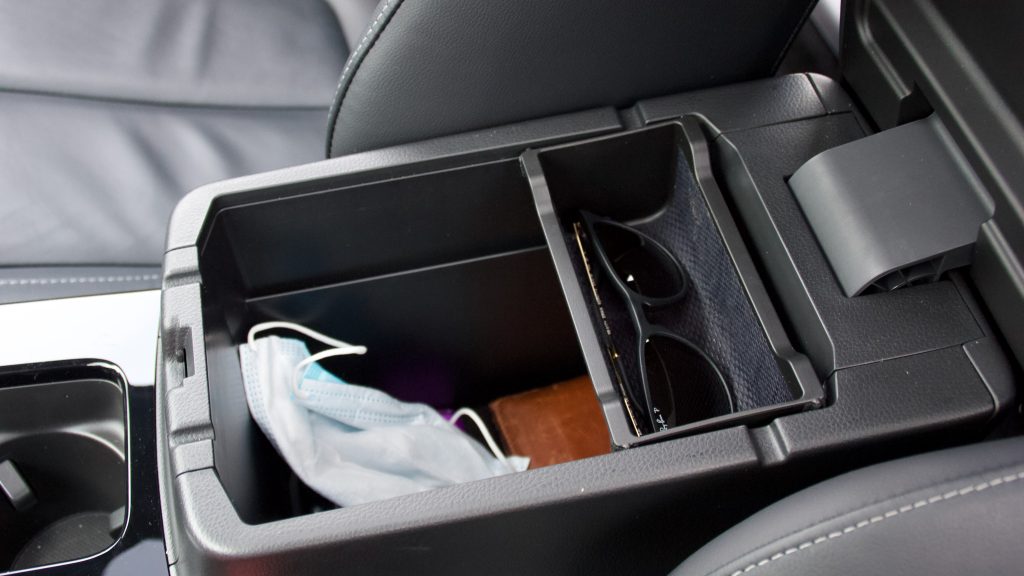
The steering could be a bit more beefy as well, but its lightness does make it extremely easy to manoeuvre around town – which is where most Eclipse Crosses will spend the majority of their time. In fact, aside from a little ride massaging, the Eclipse Cross is totally fine around town.
Take it out of town and it’s equally comfortable – a trip to Canberra and back was totally fine thanks to relatively low road noise levels, good seat comfort and the general easiness to drive that the Eclipse Cross offers.
Attempt to drive the pants off it and it’s not quite as impressive, however. Its body control stumbles when shown a quick succession of bends, and its relative heft is always felt. But the Eclipse Cross is not a rally car and its owners are not rally drivers, so for most people, it drives totally fine – just know that a T-Roc 140TSI or Karoq Sportline 140TSI – even a Toyota C-HR – do the sporty thing much better.
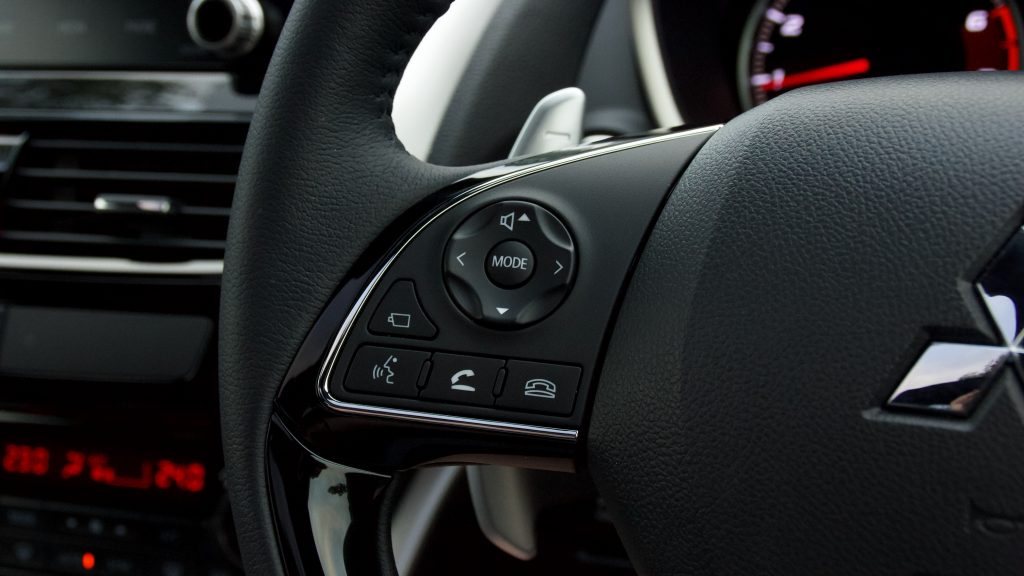
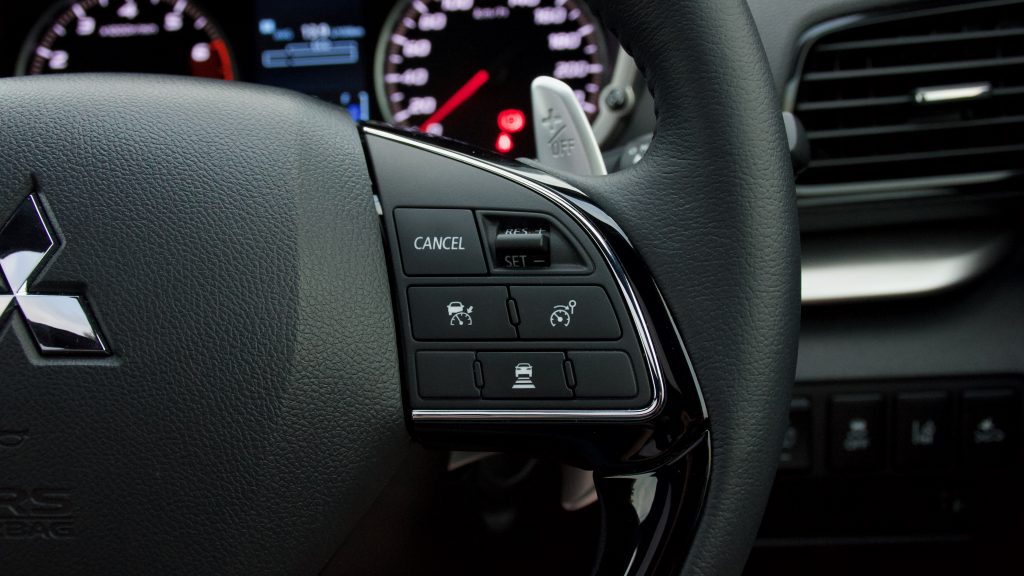
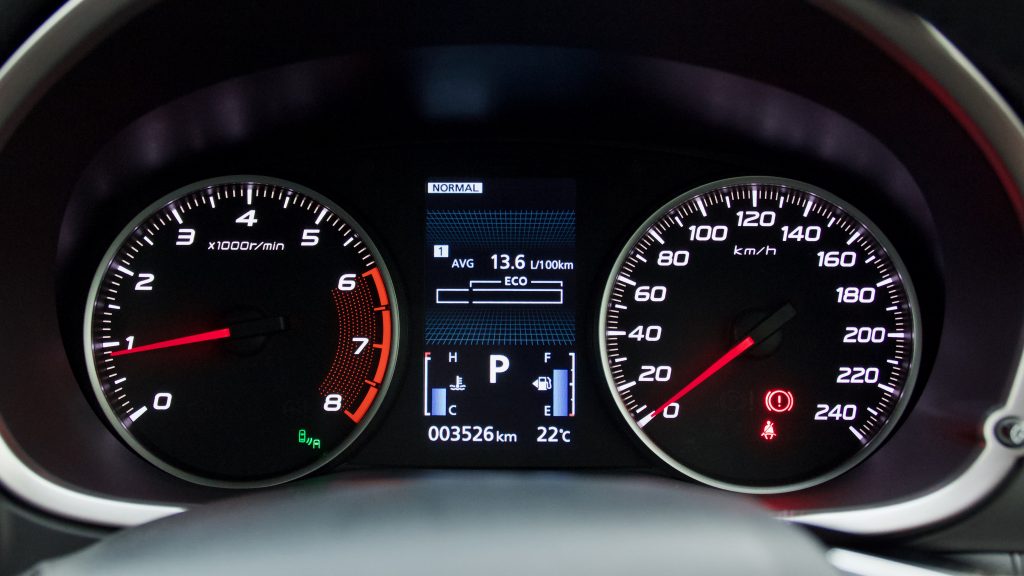
Our Exceed test car featured Mitsubishi’s ‘S-AWC’ (super all-wheel control) all-wheel drive system – if you don’t need AWD, don’t pay more for it, but if you will end up using we say go for it as it’s an excellent system. It features things like yaw control, brake torque vectoring and even different driving modes – normal, snow and gravel – for greater assistance on rougher roads. It’s the same system that featured in the last Lancer Evolution and it’s definitely one of the best all-wheel drive systems for under $50k.
Interior and Practicality: 7/10
The interior of the 2021 Mitsubishi Eclipse Cross Exceed has certainly put other Mitsubishi products in the shade thanks to its increased quality, added tech and added feel of modernity and the facelift only improves this. What we like most about the cabin is that it’s got a much more cohesive feel to it than other Mitsubishi products – the button placement feels natural, unlike the Outlander that has random functions in random places because Mitsubishi added them way into the car’s life cycle.
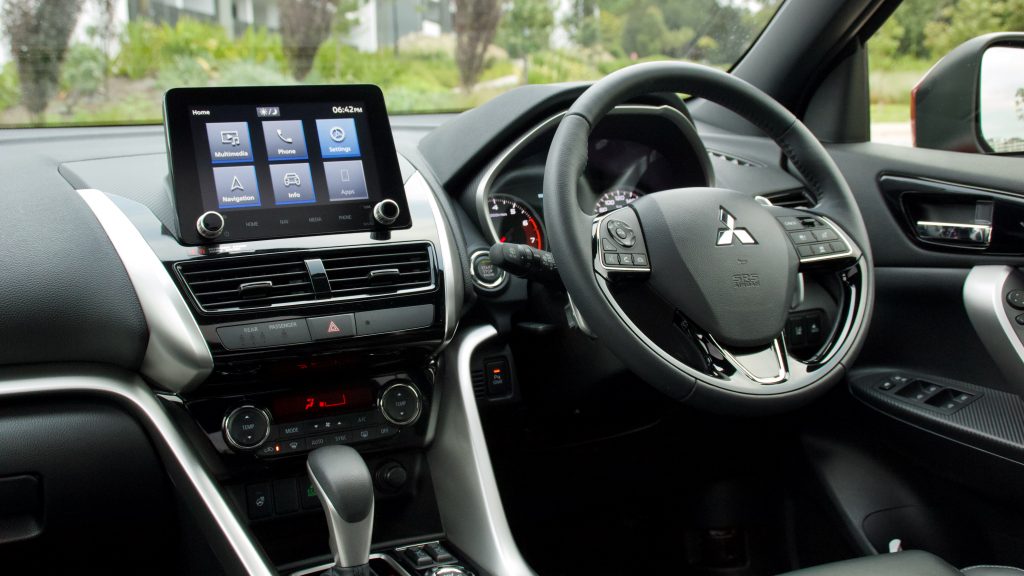
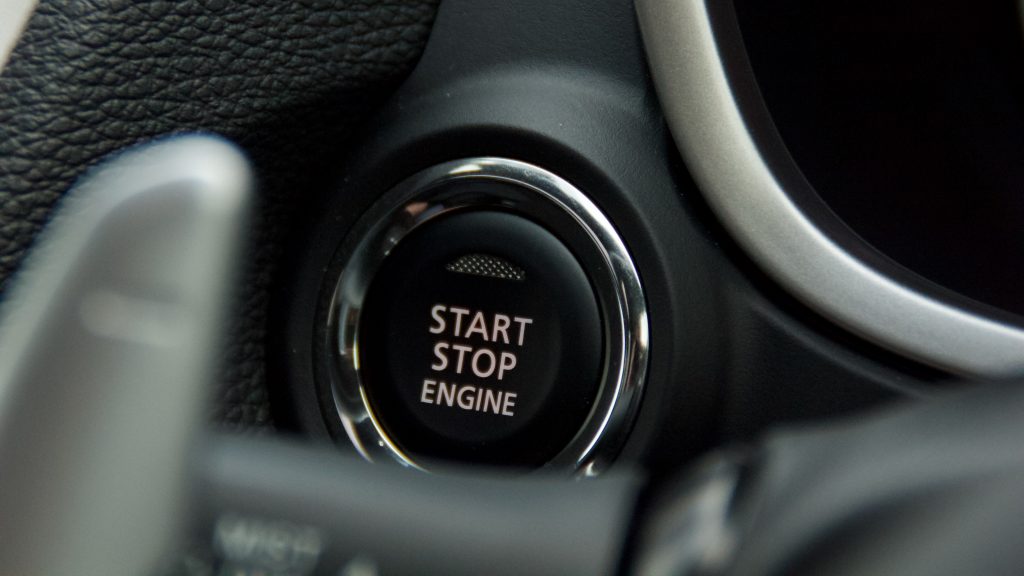

A good example of this is the 8.0-inch touchscreen, which has adopted the company’s new software and has been moved closer to the occupants for greater ease of use. Importantly, it feels like it was designed for the Eclipse Cross’ cabin – unlike the same system in an ASX, for example. The system itself is easy to use, once you’re used to it, and the screen quality is reasonable too – though a Volkswagen Group product will kill it for resolution and user friendliness.
The 510-watt eight-speaker sound system is surprisingly punchy, especially for an unbranded system, though it would be nice to see a digital driver’s display (as used in the Pajero Sport and upcoming Outlander) compliment it for the premium feel that the Eclipse Cross is chasing.
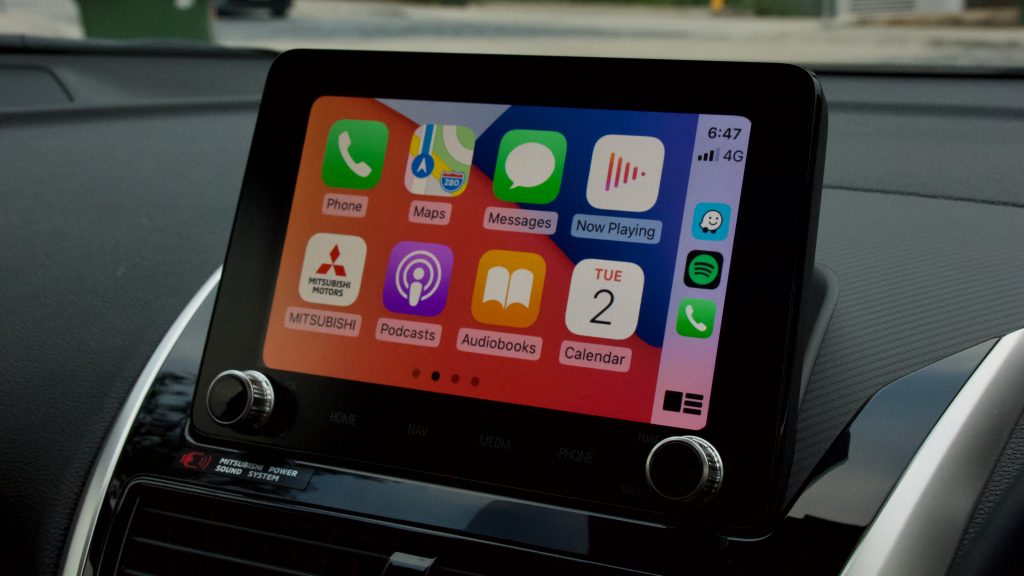

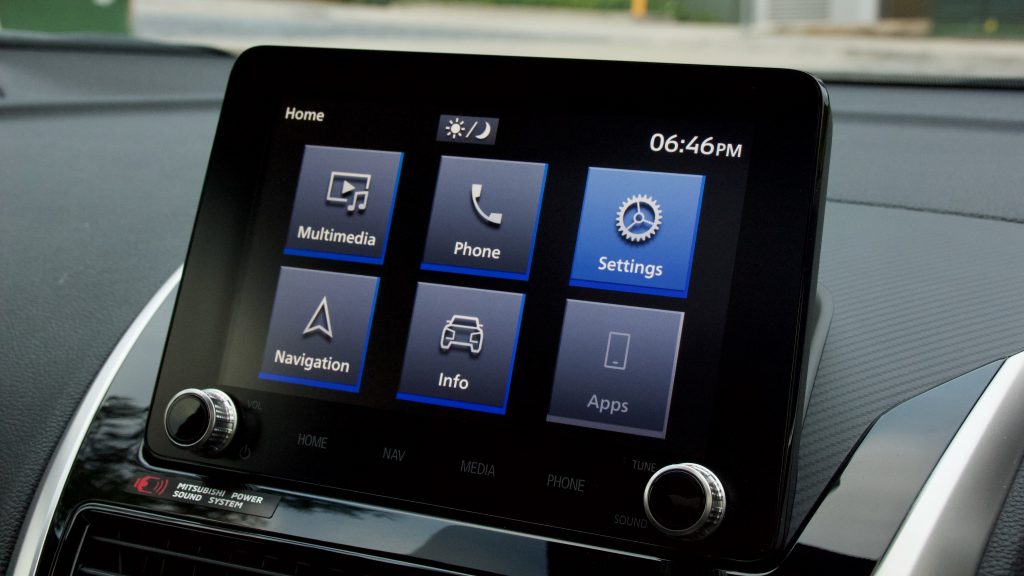
The quality inside the Eclipse Cross’ cabin is good, however – way better than other Mitsu products. Soft touch plastics line the dashboard and door tops, and while the materials lower are hard, they do feel built to last. The leather on the steering wheel is nice to touch, and only a few details such as the cheap stalks (which have a switch for a rear fog light – which the car doesn’t have!) and lack of lumbar adjustment for the front seats annoy.
It’s a reasonably practical cabin, though. The front cup holders are large, as are the door bins and centre console bin – though, that’s it with no wireless phone charging, little storage ahead of the gearbox and so on. Space for occupants is good, however. A 14cm length increase meant that rear seat space has improved, and six-footers such as myself will have no trouble getting comfortable sitting behind themselves. The rear seat features reclining and heated rear seats, a 12V socket to charge devices and a centre arm rest with cupholders – though rear vents are absent, which is disappointing considering the Eclipse Cross will be used as a family car.
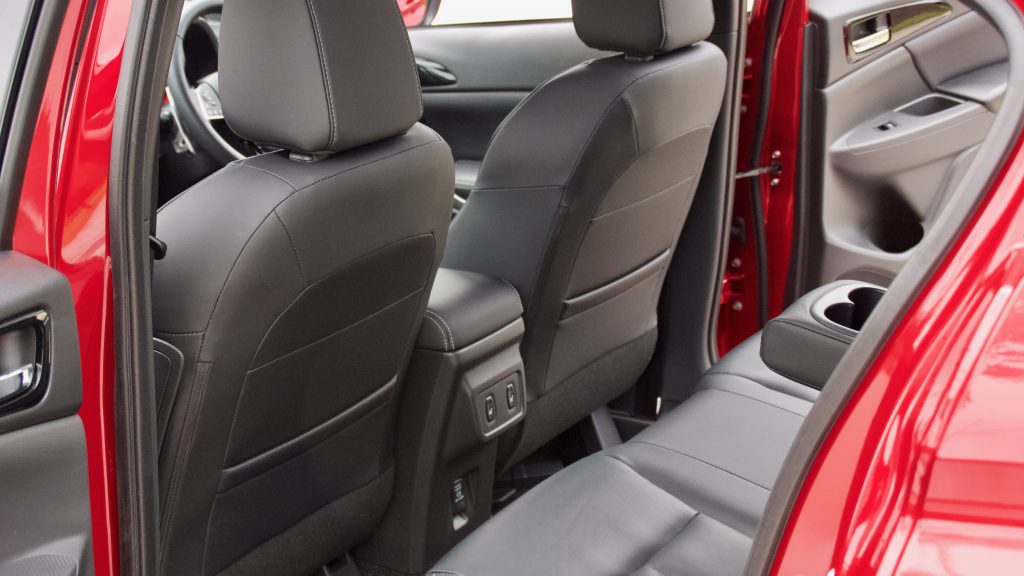
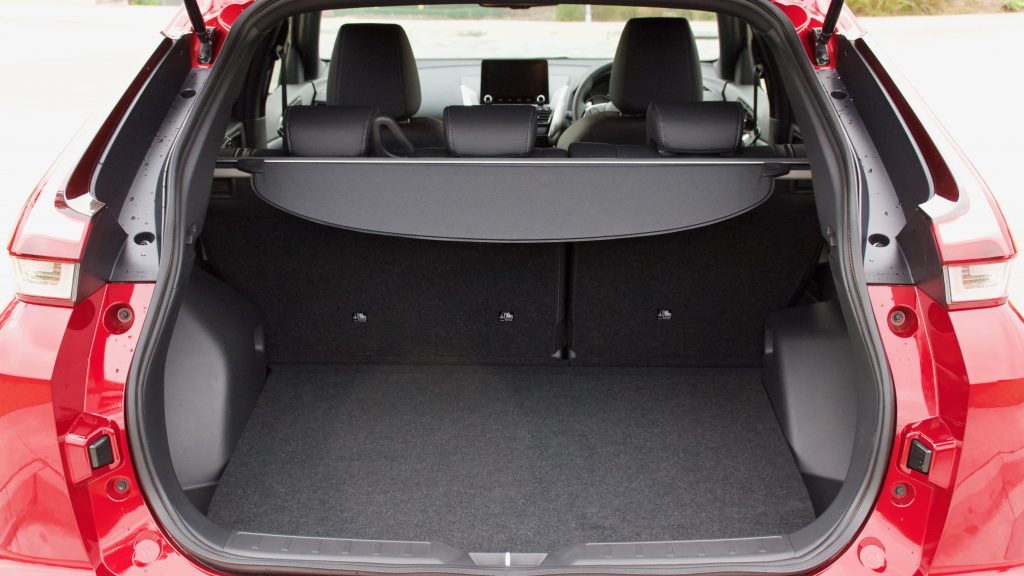
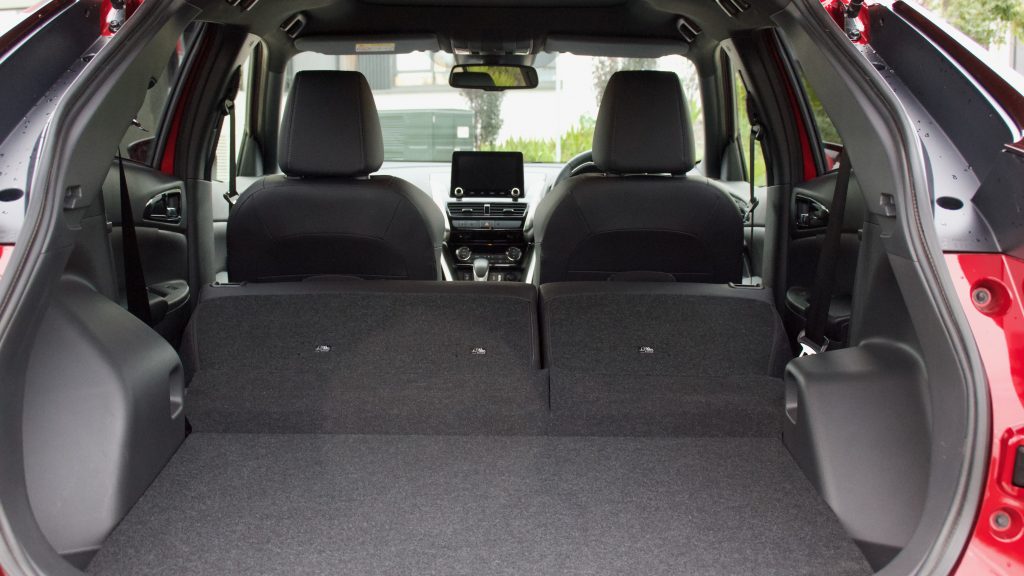
The boot of the 2021 Mitsubishi Eclipse Cross measures at 405-litres with the seats erect and 1,172L with them folded – a Volkswagen T-Roc AWD manages 372L with the seats up and 1,237L with them folded – which is a reasonably good size, it just lacks clever features such as an adjustable boot floor, nets and hooks to hang shopping off.
Service and Warranty: 10/10
True to its value core, the 2021 Mitsubishi Eclipse Cross Exceed comes with an industry-leading 10-year/200,000km km warranty with ten years/150,000km of capped-price servicing, as well as four years of roadside assistance. Service costs are reasonable for the segment at $299 each for the first five years/75,000km at $1,495 in total.
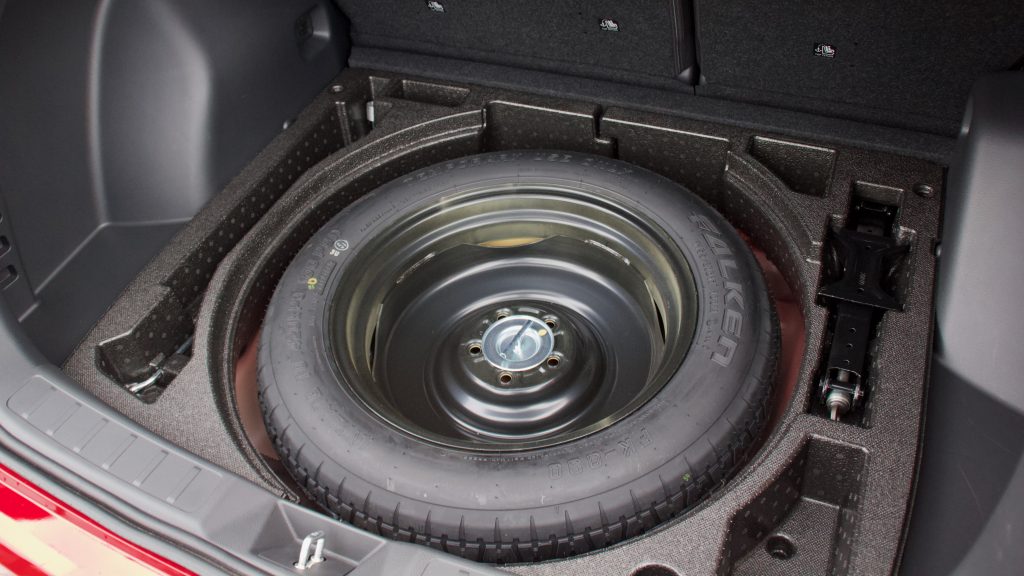
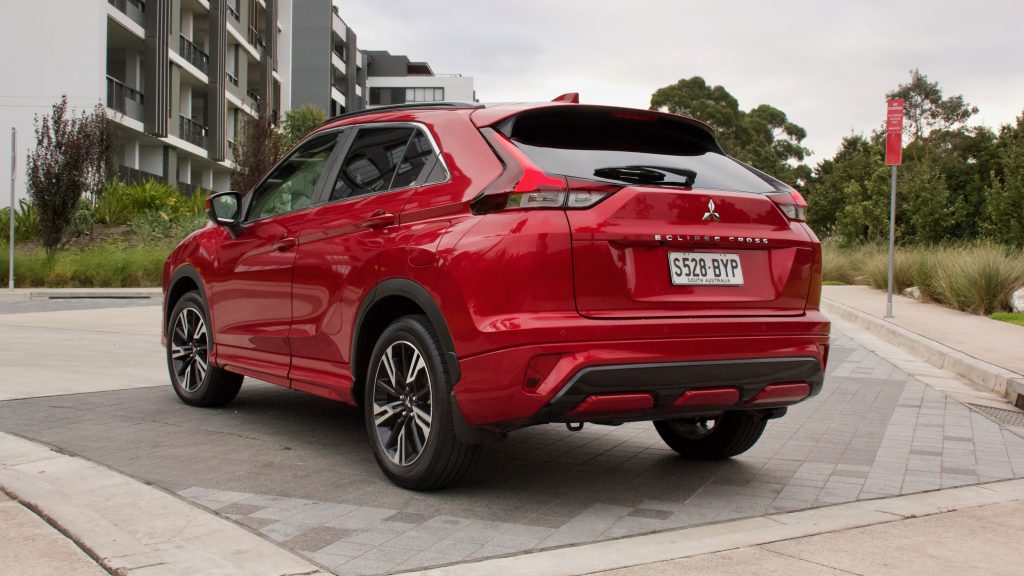
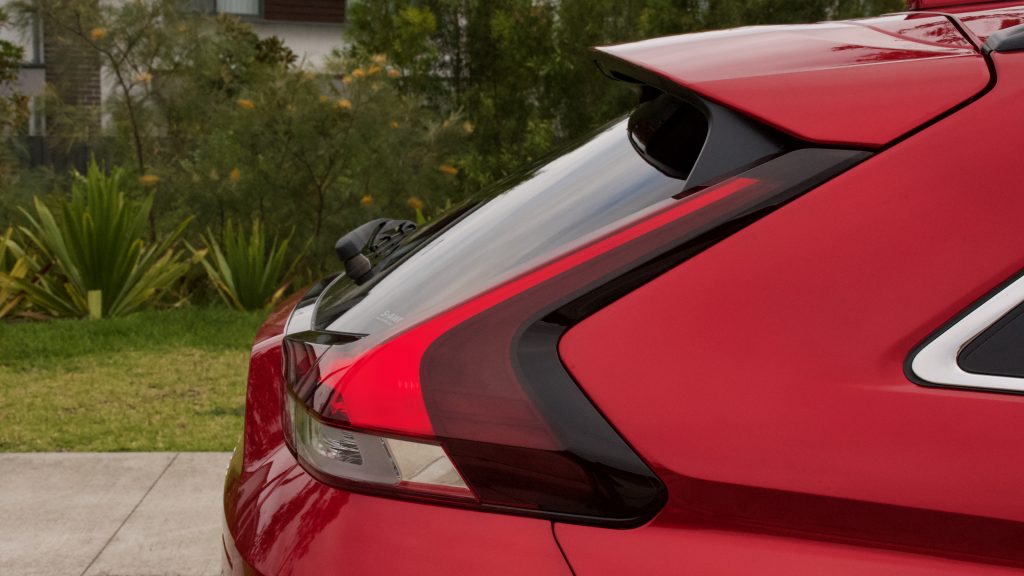
Researching servicing in competitors reveals a big difference in pricing – the Eclipse Cross is not the cheapest to service in the segment (that’s the Toyota C-HR at under $1,000 for five years) but nor is the most expensive – a Volkswagen T-Roc 140TSI costs a whopping $2,796 over the same time period.
DiscoverAuto 2021 Mitsubishi Eclipse Cross Exceed Rating: 7.6/10
So does the 2021 Mitsubishi Eclipse Cross Exceed have what it takes to fly the Mitsubishi flag for buyers in the small-to-medium SUV segments? We think so. We don’t discuss styling thanks to its subjective nature, but even the styling alone of the 2021 Mitsubishi Eclipse Cross is greatly improved – let alone its new model lineup, greater use of tech, new central touchscreen and so on.
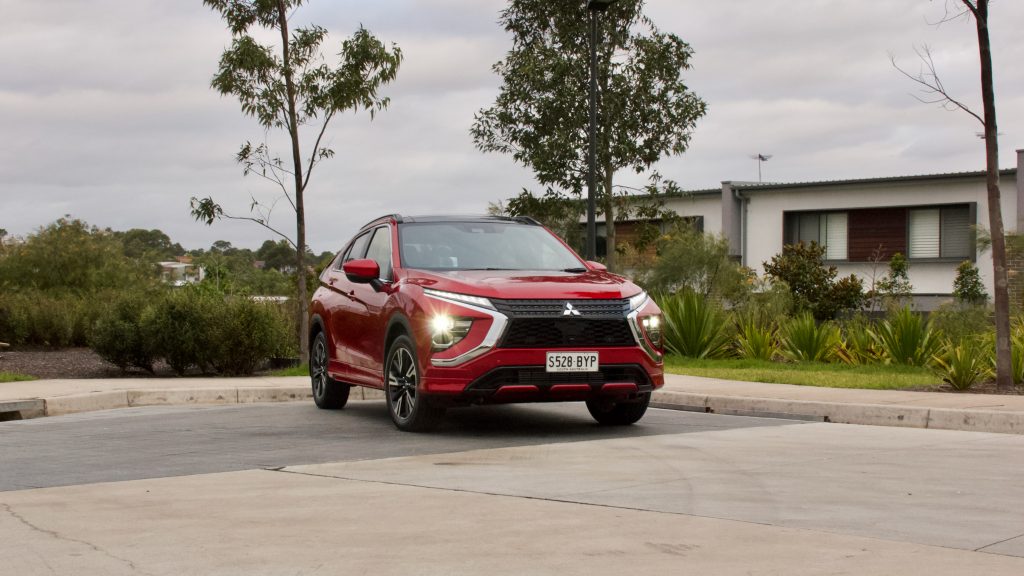
Competitors such as the Skoda Karoq are both more fun to drive and more practical, and the Toyota C-HR Hybrid is significantly more fuel efficient though not much slower. But for many SUV shoppers, the 2021 Mitsubishi Eclipse Cross will be a great option – it’s reasonably practical, comfortable, good quality, cheap to maintain and in LS or Aspire spec, excellent value for money.
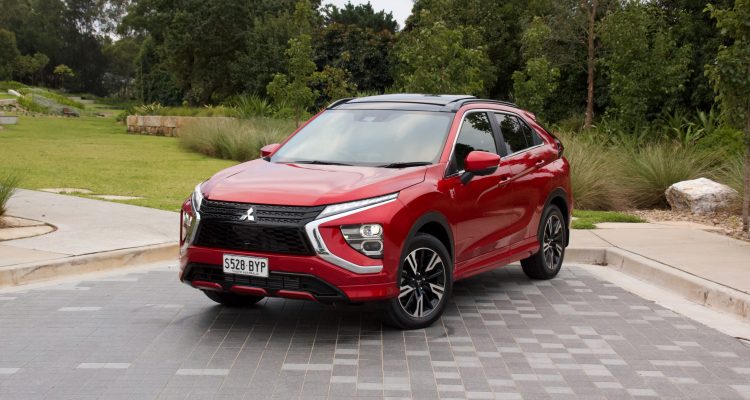
Leave a Reply